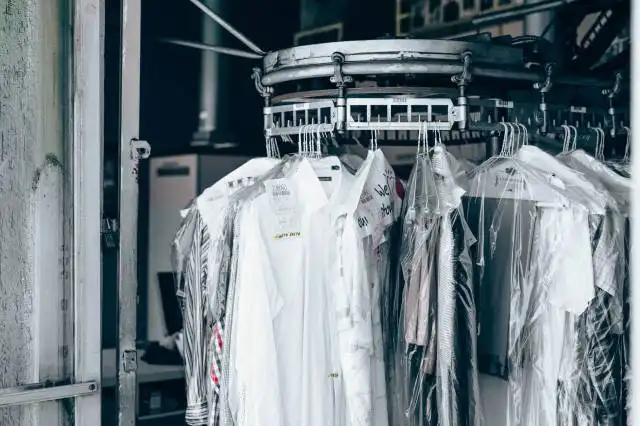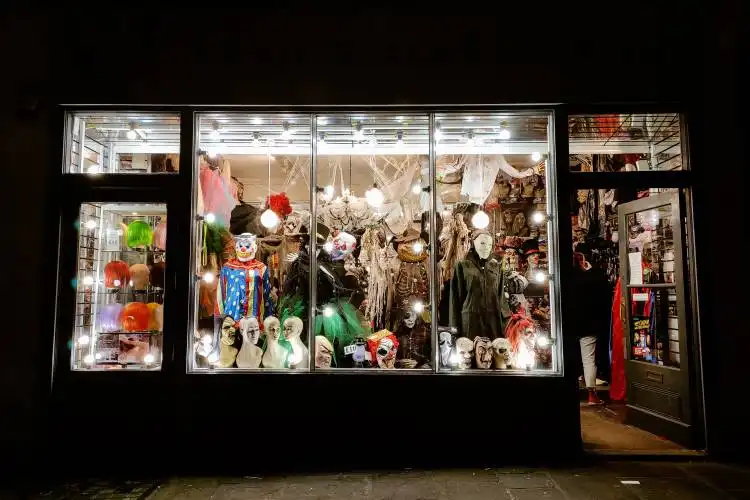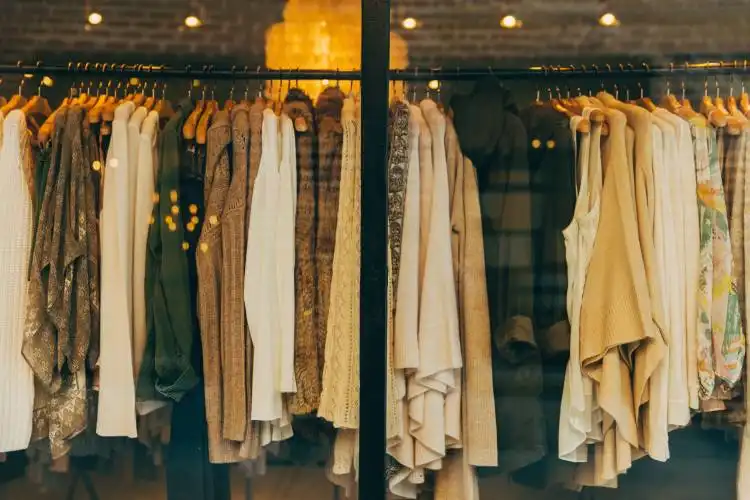Start a Formal Wear Rental Business
Dazzling Success: Making High-End Fashion Accessible for All!
| Updated


FORMAL WEAR RENTAL BUSINESS
Unleash your love for fashion by starting a Formal Wear Rental Business, a venture that could bring style within everyone's reach! This dynamic business involves renting out high-end formal wear, making it a pocket-friendly alternative for those who want to dazzle at events without denting their wallets. It's a fitting choice for those who believe glamour should be accessible, not a privilege. This fashion-forward endeavor is a classy fusion of practicality where your sartorial skills meet entrepreneurial enthusiasm.
Jump to Business Plan
RELATED BUSINESS IDEAS
Browse ALL Clothing & Fashion Trends Business Ideas
Discover Your Perfect Domain
Unlock the door to your online success with our hand-picked selection of premium domain names. Whether you're starting a new venture or rebranding an existing one, the right domain can set the tone for your digital presence. Browse through our curated list, each with its unique potential to enhance your brand's visibility and credibility.
FORMAL WEAR RENTAL MINI BUSINESS PLAN
This a quick reality check to help you identify the strengths and weaknesses of your business concept before you dive in.
Expected Percent Margins:
- Gross Margin: 70-80%
- Net Profit Margin: 20-30%
Earnings Expectations:
- Daily Earnings: $300 - $800
- Weekly Earnings: $2,100 - $5,600
- Monthly Earnings: $9,000 - $24,000
- Annual Earnings: $108,000 - $288,000
Actions needed to Hit Those Numbers:
Inventory Management:
- Initial Investment: At least $30,000-$60,000 for a diverse, quality inventory of formal wear.
- Supplier Network: Develop relationships with at least 2-4 reliable formal wear suppliers.
Marketing and Customer Acquisition:
- Social Media: Post 3-4 times a week on platforms popular with your target demographic, showcasing new arrivals and stylish outfit combos.
- Partnerships: Collaborate with local event planners, wedding consultants, and photographers for referrals.
Sales and Customer Experience:
- Staffing: Employ 1-2 full-time staff with expertise in fashion and fitting.
- Customer Experience: Ensure each client receives personalized consultations and fittings.
Cost Control:
- Rent: Choose a location where rent is less than 10% of expected monthly sales.
- Cleaners: Secure partnerships with reliable and affordable local cleaners.
Business Operations:
- Opening Hours: Open at least 5-6 days a week, 8 hours a day.
- Transaction Volume: Aim for 5-10 rentals per day with an average rental price of $60-$120.
Keep in mind these are generalized estimations and may vary depending on various factors including location, economic situations, and individual business strategies. Always consult with a business advisor or financial consultant for personalized advice.
NOT WHAT YOU HAD IN MIND? Here are more ideas



Browse ALL Clothing & Fashion Trends Business Ideas
Grab Your Business Website Name
Before you get caught up in the whirlwind of setting up your business, invest in a domain name. It's a small but significant step that lays the foundation for your brand and makes it easier for customers to find and trust you. Just like you wouldn't build a house without securing the land first, don't build a business without securing your domain name.
"Why? Can't that wait?" Here's why it shouldn't
Step 1: Determine if Formal Wear Rental Business is Right Endeavor
Breakdown of Startup Expenses
Starting a formal wear rental business requires a significant amount of capital. The startup expenses will include the cost of renting a space, purchasing the inventory, and any necessary equipment. Additionally, there may be costs associated with marketing and advertising the business. It is important to research the local market and determine how much competition there is in the area. This will help to determine how much money will need to be invested in order to get the business off the ground.
Breakdown of Ongoing Expenses
After the business is up and running, there will be ongoing expenses that need to be taken into account. These expenses will include the cost of maintaining the inventory, such as dry cleaning and repairs. Additionally, there will be costs associated with staffing the business, such as salaries and benefits. It is important to factor in these costs when determining the price of the rental items.
Examples of Ways to Make Money
There are several ways to make money with a formal wear rental business. One way is to charge a flat fee for the rental of the items. Additionally, the business can offer discounts for bulk rentals or offer add-on services such as styling or alterations. The business can also offer discounts for referrals or offer discounts for customers who rent multiple items. Finally, the business can offer discounts for customers who rent items for special occasions, such as weddings or proms.
Step 2: Name the Business
When deciding on a name for your formal wear rental business, it is important to choose something that is memorable and reflects the type of business you are running. Consider using words that evoke a sense of elegance, sophistication, and luxury. You may also want to include words that are associated with formal wear, such as “tuxedo” or “gown.” Additionally, make sure to choose a name that is not already taken by another business. You can do this by searching the USPTO’s trademark database or by searching the internet for similar businesses.
Registering the Business Name
Once you have chosen a name for your business, you will need to register it with the state in which you plan to operate. This process is usually done through the Secretary of State’s office. You may also need to register with the county or city in which you plan to operate. Additionally, you will need to register your business name with the IRS for tax purposes. This can be done by filing Form SS-4.
Obtaining a Business License
In addition to registering your business name, you will also need to obtain a business license. This is usually done through the local government office in which you plan to operate. Depending on the type of business you are running, you may need to obtain additional licenses or permits. For example, if you plan to sell alcohol, you will need to obtain a liquor license.
Protecting Your Business Name
Once you have registered your business name, it is important to protect it from being used by another business. You can do this by registering your business name as a trademark. This will prevent other businesses from using your name and will give you exclusive rights to use it. Additionally, you should consider registering your business name as a domain name and setting up a website for your business. This will help you protect your business name and will also help you market your business.
Step 3: Create a Business Plan
Creating a business plan is an important step in starting any business. It will help you to define your business goals, create a budget, and set a timeline for success. A business plan should include the following components:
Executive Summary: This is a brief overview of your business plan that should include the purpose of the business, the target market, and the financial goals.
Company Description: This section should include a description of your business, including the type of services you offer, the target market, and the competitive advantage you have over other businesses in the same industry.
Market Analysis: This section should include an analysis of the current market for your services, including an analysis of the competition and the potential for growth.
Marketing Plan: This section should include a detailed plan for how you will market your business, including advertising, promotions, and public relations.
Financial Plan: This section should include a detailed budget for startup costs, ongoing expenses, and projected income. It should also include a financial analysis of the potential for success.
Operational Plan: This section should include a description of how the business will be operated, including the management structure, staffing, and operational processes.
Risk Analysis: This section should include an analysis of any potential risks associated with the business, including legal and financial risks.
Benefits of Creating a Business Plan
Creating a business plan is an important step in starting a formal wear rental business. It will help you to define your goals, create a budget, and set a timeline for success. A business plan will also help you to secure funding from investors or lenders, as well as provide a roadmap for success. Additionally, a business plan can help you to identify potential risks and develop strategies to mitigate those risks. Finally, a business plan can help you to track your progress and measure your success.
Step 4: Obtain Necessary Licenses and Permits
In order to operate a formal wear rental business, it is important to research and obtain all necessary licenses and permits. Depending on the state, local, and federal laws, there may be different licenses and permits required to operate a business. For example, in some states, a business license may be required to operate a business. Additionally, a sales tax permit may be required in order to collect sales tax from customers. It is important to research the licenses and permits that are necessary to operate a business in the area where the business will be located.
Obtain Necessary Licenses and Permits
Once the necessary licenses and permits have been identified, it is important to obtain them. This may involve submitting an application, paying a fee, and providing other documentation. It is important to make sure that all licenses and permits are obtained before the business begins operating. Additionally, it is important to make sure that all licenses and permits are kept up to date.
Keep Records of Licenses and Permits
In order to make sure that the business is in compliance with all laws and regulations, it is important to keep records of all licenses and permits. This includes keeping copies of all applications, fees, and other documents related to the licenses and permits. Additionally, it is important to keep records of any renewals or updates to the licenses and permits.
Consider Professional Assistance
If there is any confusion or uncertainty about the licenses and permits that are necessary to operate a formal wear rental business, it may be beneficial to seek professional assistance. This may include consulting with an attorney or accountant who is familiar with the laws and regulations in the area. Additionally, it may be beneficial to consult with a business advisor or mentor who has experience in the industry.
Step 5: Find a Location
Finding the right location for a formal wear rental business is essential. It should be in an area that is accessible to customers and has adequate parking. The location should also be large enough to accommodate the inventory and any necessary equipment. Additionally, the rent should be affordable and the lease should be flexible.
How to Secure a Location
Once the ideal location has been identified, the next step is to secure the space. This will involve negotiating a lease agreement with the landlord. It is important to consider the length of the lease, the amount of rent, and the terms of the agreement. Additionally, the business owner should check with the local government to ensure that the business is in compliance with all zoning and other regulations.
Financing the Location
Securing a location for a formal wear rental business can be expensive. The business owner may need to secure financing to cover the cost of the lease. This could include a loan from a bank or other financial institution, or it could involve seeking investors. Additionally, the business owner should consider applying for grants or other forms of funding.
Outfitting the Location
Once the location has been secured, the business owner will need to outfit the space. This could include purchasing furniture, fixtures, and equipment. Additionally, the business owner should consider investing in security systems and other safety measures. Finally, the business owner should also think about how to decorate the space in order to create a welcoming atmosphere for customers.
Step 6: Purchase Necessary Equipment
When starting a formal wear rental business, it is important to purchase the necessary equipment. This includes items such as mannequins, garment racks, hangers, and a steamer. Depending on the size of the business, a sewing machine may also be necessary. It is important to research the best quality items that fit within the budget.
Research Suppliers
Once the list of necessary equipment is compiled, it is important to research suppliers. This includes researching the cost of the items, the quality of the items, and the return policy. It is important to purchase items from reliable suppliers that offer quality items at a reasonable cost. Additionally, it is important to purchase items from suppliers that offer a return policy in case the items are not satisfactory.
Purchase Insurance
It is important to purchase insurance for the business. This includes liability insurance as well as insurance for the items in the inventory. This will help protect the business in case of any accidents or damages. Additionally, it is important to research the different types of insurance available and the cost of each type.
Create a Budget
When purchasing the necessary equipment, it is important to create a budget. This will help ensure that the business does not overspend. Additionally, it is important to research the cost of the items and compare the cost of different suppliers. This will help ensure that the business is getting the best deal on the items.
Step 7: Market the Business
Once the business is up and running, it is important to market it to potential customers. Examples of ways to market the business include creating a website, using social media, and advertising in local newspapers and magazines. Additionally, word-of-mouth marketing is an effective way to spread the word about the business. It is important to create a budget for marketing and stick to it.
Networking
Networking is another important way to market the business. This can include attending local events, joining local business groups, and attending industry conferences. Networking can help to build relationships with potential customers and other industry professionals. Additionally, it can be a great way to find potential suppliers and partners.
Developing a Brand
Developing a brand is also important for marketing the business. This includes creating a logo, slogan, and website. Additionally, it is important to create a consistent look and feel for all marketing materials. This will help customers to easily recognize the business and its services.
Promotions
Promotions can also be used to market the business. This can include offering discounts, running contests, and offering referral programs. Additionally, it is important to create promotional materials such as flyers and brochures. These materials should be distributed to potential customers in the local area.
Step 8: Hire Employees
When hiring employees, it is important to consider the skills and experience they can bring to the business. It is also important to consider the cost of hiring and training new employees. It is important to have a clear job description and salary expectations for each position. Additionally, it is important to have a clear understanding of the employee’s responsibilities and expectations.
Training Employees
Once employees have been hired, it is important to provide them with the necessary training to ensure they are able to perform their duties. This includes training on customer service, product knowledge, and safety protocols. Additionally, it is important to provide employees with the necessary tools and resources to do their job. This includes providing them with uniforms, safety equipment, and any other necessary items.
Employee Benefits
It is important to provide employees with benefits that will help them feel valued and appreciated. This includes offering competitive salaries, health insurance, vacation time, and other benefits. Additionally, it is important to provide employees with the opportunity for professional development and growth. This includes offering training and educational opportunities.
Employee Retention
Finally, it is important to have strategies in place to retain employees. This includes offering incentives, such as bonuses and rewards, and providing a positive work environment. Additionally, it is important to provide employees with feedback and recognition for their hard work. This will help to ensure that employees feel valued and appreciated.
Step 9: Develop a Pricing Strategy
The last step in starting a formal wear rental business is to develop a pricing strategy. When setting prices, it is important to consider the costs of the rental items, the costs of running the business, and the market rate for similar services. It is also important to consider the profit margin desired. To ensure that the business is profitable, the prices should be set at a rate that covers the costs of the rental items and the costs of running the business, while also allowing for a reasonable profit margin.
When setting prices, it is important to research the market rate for similar services and to consider the quality of the rental items. It is also important to consider the target market and the competition. For example, if the target market is high-end customers, the prices should be set at a rate that reflects the quality of the rental items and the services provided. On the other hand, if the target market is budget-conscious customers, the prices should be set at a rate that is competitive with the competition.
It is also important to consider the cost of marketing and advertising when setting prices. Advertising and marketing costs can add up quickly, so it is important to factor these costs into the pricing strategy. Additionally, it is important to consider the cost of customer service and any other services offered.
Finally, it is important to consider the profit margin desired when setting prices. The profit margin should be set at a rate that allows for a reasonable return on investment. This will ensure that the business is profitable and that the owner is able to make a living from the business.
EXPLORE MORE CATEGORIES
Browse ALL Business Idea Categories
TAKE THE NEXT STEPS










